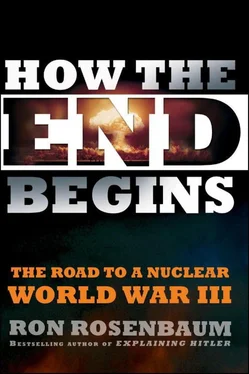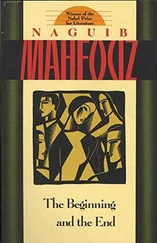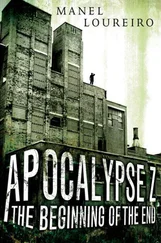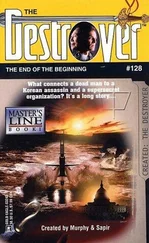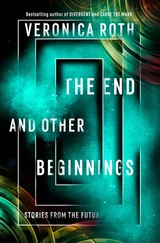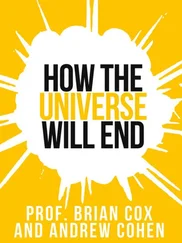“But what if you were president and you were faced with that choice? What would you do?”
“I wouldn’t want to answer that question publicly,” he said. “But I know we shouldn’t allow machines to make the decision, which has become the tendency.”
It was the damnable paradox of deterrence again. I sensed that he would in that moment of Last Resort not choose willingly to kill tens, hundreds of millions. But even he, nuclear abolitionist, couldn’t say that such genocidal vengeance was wrong because it might undermine deterrence if he gave the impression his thinking was widespread among U.S. leadership.
And so he fell back on what the generals at Omaha had offered: ambiguity. He might have had an answer in mind, but an attacker could not be sure what it was. Meanwhile despite all the ambiguity they sought to convince us of, the hair-trigger configuration, the training of the people with the codes and the keys did not factor in ambiguity. They were hair-trigger-trained, ready to twist the keys. Use it or lose it.
I suspect that for Nunn it is the impossibility of solving the nuclear deterrence paradox—that we must give the impression we will commit genocide to avoid genocide—that has forced this plain-spoken moral man to be afraid to say he won’t commit genocide. For that reason alone nuclear weapons must go.
But Nunn, Kissinger, and their cohorts were not the only veterans of the Cold War to convert to abolitionism. I was particularly impressed by the deeply penitent response of one of the most hard-nosed nuclear advocates, Sir Peregrine Worsthorne. The man who had been editor of the influential Tory Sunday Telegraph at the height of the Cold War and a confidant to Prime Minister Margaret Thatcher and President Ronald Reagan had delivered himself of what seemed an agonized recantation. [299]In 1996 he had claimed to a certainty that Thatcher and Reagan were not bluffing about nuclear retaliation; they would have pushed the button even if there had been no point but the promised punishment left. And, he added, to do so, he now believed, was obscenely immoral.
He has also changed his view of the acceptability of the nuclear deterrence: “Would some historian emerging centuries later from the post thermonuclear war Dark Ages have judged [pressing the button] morally justified, or so evil as to dwarf even the most monstrous inequities of Hitler, Stalin and Mao?… How could we have believed anything so preposterous?”
In the last ten years, abolition had brought to its side not only some prominent hawks, but a significant segment of the liberal, dovish arms control community, which up until then had favored radical reductions in nuclear weapons and “minimal deterrence.” One of the key figures in this shift was Bruce Blair. His conversion from arms controller to abolitionist was surprisingly recent, just “a few years ago,” he told me. And when he speaks about it, one is able to witness its emotional power. In most of our previous conversations Blair had been calm, cool, very much the well-informed unemotional analyst, comfortable talking the jargon of the nuclear command and control community from which he came. He was an arms control advocate, and personally controlled as well.
But on our third visit, we found ourselves talking about nuclear weapons and war crimes. We were in the cafeteria of the Brookings Institution next door to his office in the Carnegie Endowment for International Peace building.
I asked Blair what I’d asked the missile crewmen I’d met about “having the power of twisting the keys and thereby killing 10, 20 million people.” I recalled that most of them seemed to deliberately speak lightly about it but sensed in their forced levity that they were troubled by it.
“Were you?” I asked Blair. “How did you feel about that when you had that power?”
“I felt important,” he said. “For someone who is young in their early twenties and to have this sort of responsibility is fairly sobering and self-empowering, but not a matter of conscience for me at the time. I didn’t struggle with that. And never dwelled on it either. I think there was some denial mechanism at work, and let’s face it, millions of people—that’s an abstraction. The training was designed to screen out people who had serious issues with that, so they never were in the position of giving—so you [the ones not screened out] were at best in the kind of somewhat troubled category, not deeply.” [300]
The “somewhat troubled category, not deeply”: an interesting way of putting it. “Has it changed for you?”
“Oh, heck… of course. Everything changed for me.”
“At what point?”
“I turned completely against the idea of a world with nuclear weapons. There were so many factors that sank in over time for me that suddenly tipped me into the ‘this is totally unacceptable’ camp.”
“How long after you got out did this begin to happen?”
“I didn’t really tip over into this camp until a few years ago.”
This came as a surprise. “So up until then you felt your task was making it [deterrence] rational.”
“Yeah. Safer. I came to realize over time just how dangerous it was. That doesn’t mean that I didn’t think we could alleviate those damages satisfactorily through things like de-alerting.
“When I wrote the article [in 1997] with [Sam] Nunn, we were not for the elimination of nuclear weapons.” [301](He’s referring to an influential Washington Post piece that led to the Nunn-Lugar nuclear demolition program.)
He pauses. “Now I’m seriously, sincerely, urgently for Zero. It’s the realization of the danger, not only launch on warning but the extent of delegation [of launch authority] to multiple people lower down the chain of command which I learned really much more later on. I knew [some of] that at the time—”
“That’s in your 1985 book, right?” I asked, referring to Strategic Command and Control . [302]
“Yeah and I learned more over time. I knew a little bit at the time but all of these dangers, the three-minute drill [where Cheyenne Mountain threat assessment specialists are asked to judge the reliability of nuclear attack warnings from radar and satellite sensors within three minutes], the thirty-second briefing [where specialists give an assessment to the chief of STRATCOM in Omaha, who then transmits it immediately to the president].”
But it was more than the severe urgent localized instabilities in the command and control structure. It was the system itself, he says, which—on an issue of potential life or death for the entire populace of the U.S. and billions elsewhere—was profoundly undemocratic. “What it tells you is that the democratic system isn’t very functional in the control of nuclear weapons, because the timeliness—the emphasis on preemption, quick decision making, rote decision making—just denies any possibility of national leadership, much less some kind of semi-democratic—”
“No people’s choice when it comes to nuclear targeting?”
“And then you realize, Jesus, even if democracy’s functioning properly under our Constitution it still gives the power to, really, to one person. The president’s commander-in-chief and by God you realize as you get older, that these people have deep flaws. For chrissake Nixon was drunk during the Yom Kippur whirlwind [the 1973 Egyptian invasion of Israel in which threats and counterthreats of nuclear intervention rocketed between Israel, Cairo, Washington, and Moscow]. [303]I was in a launch control center and was told to go to DEFCON-3, take my launch keys out of the safe and the launch codes. And Nixon was asleep in a stupor. And that was [Secretary of Defense James] Schlesinger and [National Security Adviser Henry] Kissinger and the gang who were making these decisions. They told him about it later after he came to.”
Читать дальше
